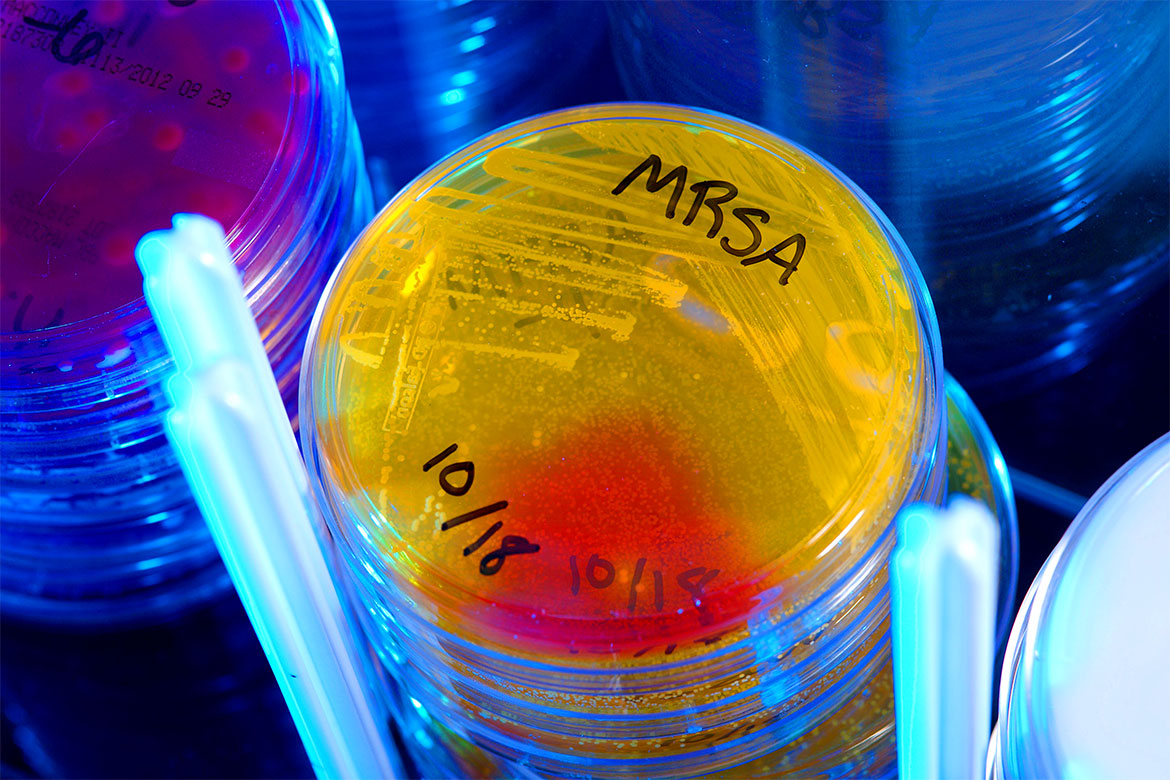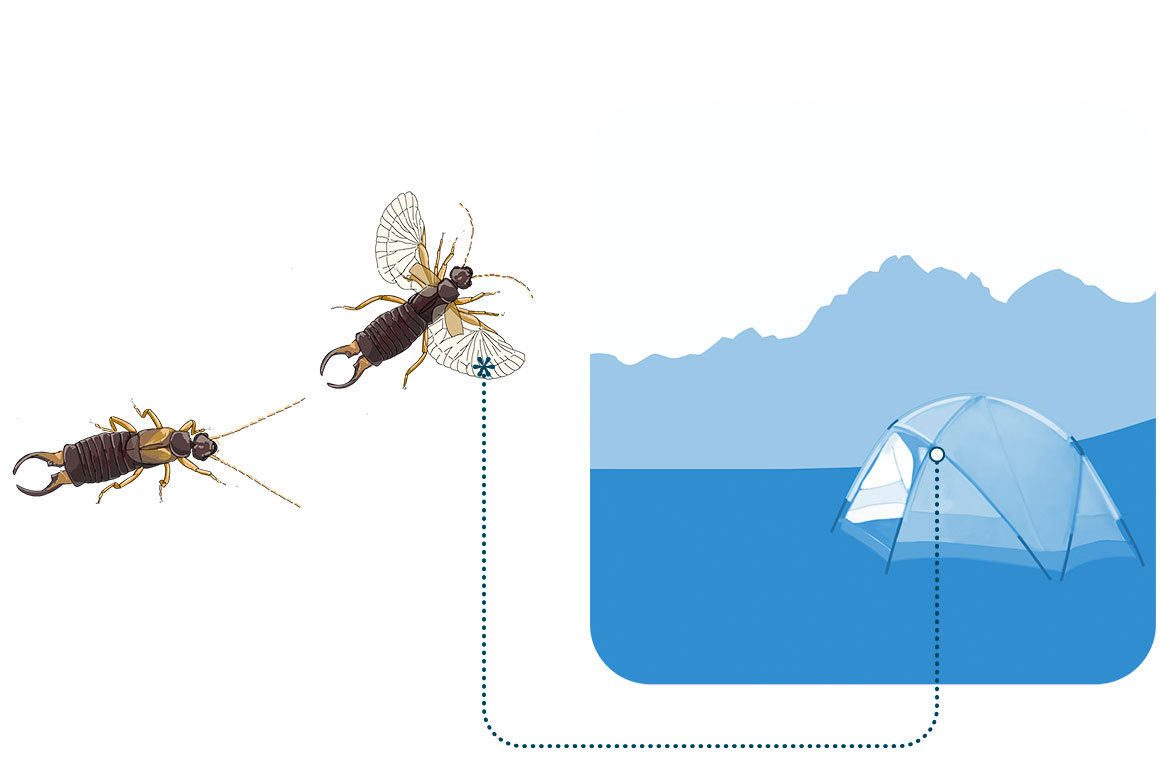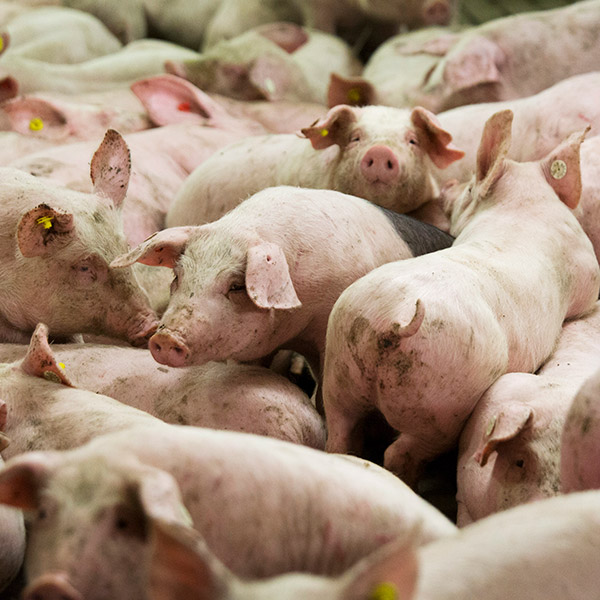NANOBIOTECHNOLOGY
Antibacterial food packaging
A protein taken from the immune system and a lipid from our digestive system can kill off dangerous bacteria.

Antibacterial packaging could also help combat Staphylococcus aureus, which is resistant to the antibiotic methicillin. | Photo: Melissa Dankel/CDC
Researchers in Fribourg have developed a nanocoating that can prevent bacteria from settling on surfaces. It is comprised of a small protein that destroys the shell of the bacteria and a lipid that stabilises the coating and makes it waterproof. In laboratory tests, this combination has proven to be surprisingly effective against the clinically relevant bacteria Pseudomonas aeruginosa and Staphylococcus aureus.
What’s unusual here is that both components occur naturally in the human body. The protein is part of our immune system, and the lipid a product of our digestive system’s small intestine. “In contrast to other antibacterial coatings, our material is food-safe and could in future be utilised for packaging foodstuffs or for bandages”, says Stefan Salentinig, the lead researcher in the group.




